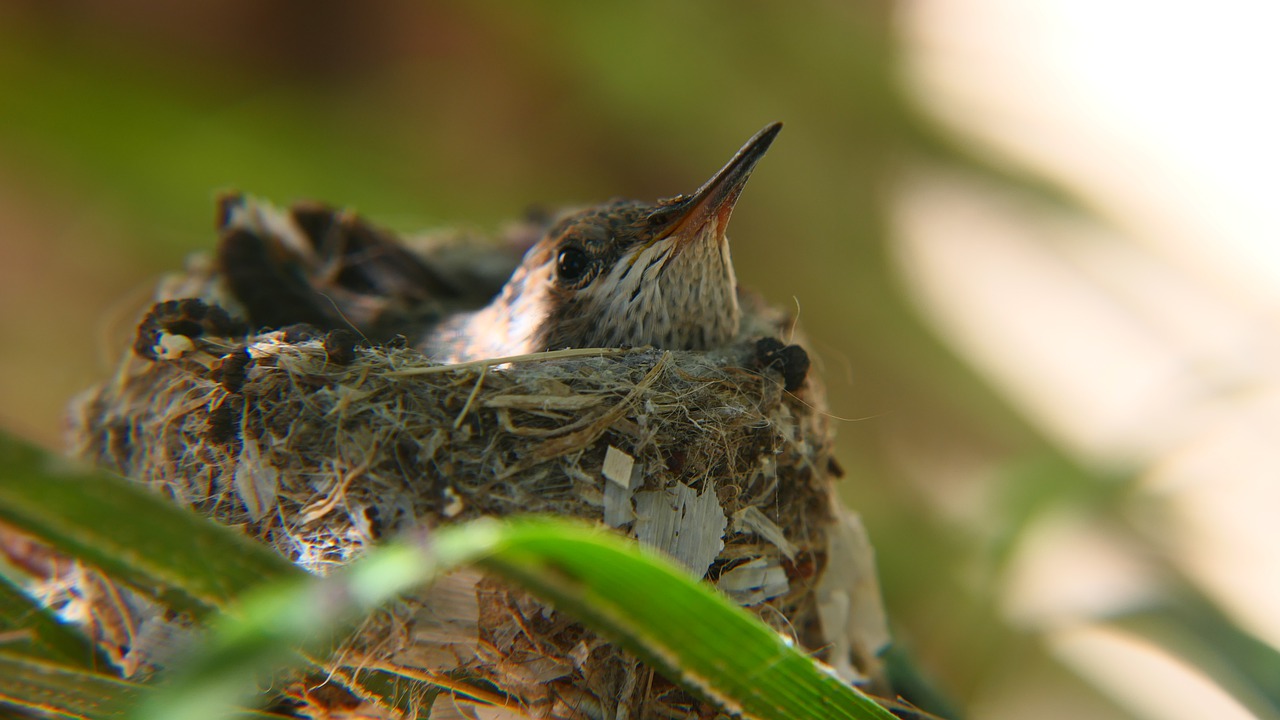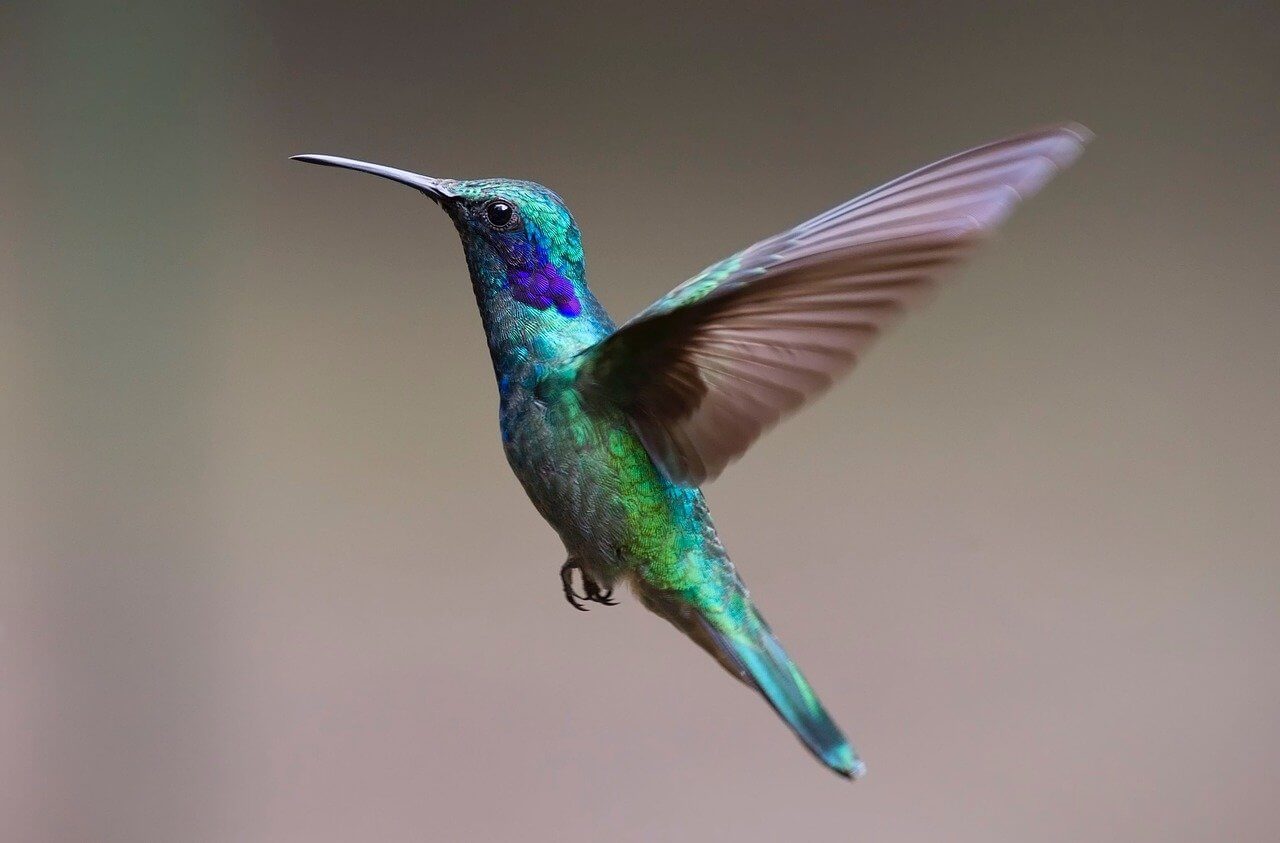Have you ever wondered about the sleeping habits of hummingbirds? Perhaps you’ve heard that they sleep in a state of torpor and you want to know what that means, exactly. So, where do hummingbirds sleep? What is their process for choosing a resting spot, and how long do they sleep each night? In this article, we’ll answer all of these questions and more.
What You'll Learn Today
Where Do Hummingbirds Nest at Night?

Hummingbirds are tiny birds, and when they sleep, they must go into a deep hibernation-like state known as torpor. For both of these reasons, nighttime tends to leave them vulnerable and unable to protect themselves.
To combat this vulnerability, hummingbirds choose their resting spots with great care. They usually look for a safe, sheltered perch with plenty of height and thick twigs and branches.
Some of the places hummingbirds may choose to go to sleep at night include:
- Their nests: mother hummingbirds incubating eggs or raising babies will usually sleep on the nest. Since hummingbirds choose their nesting location as carefully as they choose their nightly resting spots, the nest makes an adequately safe place to spend the night.
- Tree and shrub branches: like many other birds, hummingbirds will roost in trees, bushes, and shrubs. They prefer branches surrounded by plenty of foliage. And smaller twigs to help them stay out of sight.
- Any safe, sheltered perch: hummingbirds don’t just roost in trees. They may also sleep under the eaves on houses, perched on porch lights, and on any other natural or manmade structure that they determine will provide adequate shelter.
- Hanging on the feeder: Hummingbirds often sleep hanging upside down. They may hang from branches or other sheltered perches, but occasionally, you may find them hanging from one of your nectar feeders.
Speaking of hummingbirds sleeping on nectar feeders, check out the following video to see what it looks like:
Do Hummingbirds Sleep in the Same Place Every Night?
Hummingbirds may have their favorite perch, but chances are they have more than one place where they choose to sleep.
Hummingbirds often cover a great distance, as they typically drink nectar from around 1,000 flowers every day. They may choose resting perches near each of their main food sources so they can bed down near whatever location they happen to be in as night falls.
That said, it all depends on the individual hummingbird, its location, and the local habitat. Hummingbirds use what’s available to them, so if they have plenty of food in a relatively small area, they may stay in that area and sleep in the same spot each night.
What Kind of Trees Do Hummingbirds Sleep In?
Hummingbirds will sleep in any tree that offers shelter and protection. They also need to stay near a food source, as they must eat as soon as they awaken each morning.
For this reason, they may show some preference for flowering trees and shrubs such as redbuds, crabapples, and honeysuckles. These plants provide everything they need–food, shelter, and protection–in one convenient package.
How Long Does a Hummingbird Sleep?
Hummingbirds, like many other birds, sleep at night. This is because they need the light and warmth of daytime to find flowers and maintain the necessary body temperature range.
Hummingbirds must keep their body temperature between 104 and 108 degrees Fahrenheit. Because the outside temperature usually falls after the sun sets, many hummingbirds start preparing for bed even before it’s dark.
Once they have chosen their spot to bed down for the night, they will puff out their feathers to conserve body heat, close their eyes, and point their beaks into the air.
They will then settle into a state of torpor, which is a deep sleep similar to hibernation. Torpor slows down a hummingbird’s metabolism and allows its body temperature to fall below 104 degrees so it doesn’t use up its energy stores so quickly.
That said, hummingbirds still burn a lot of energy even while sleeping. For this reason, they have to eat as soon as they wake up, and they immediately consume 25 percent of their food for the entire day.
There are no set hours for when a hummingbird sleeps, but they generally sleep from dusk until dawn.
Where Do Hummingbirds Go When It Gets Cold?

Many hummingbirds living in colder climates will migrate south for the winter. They are solitary birds, so each one migrates on its own, without a flock.
Migrating hummingbirds fly up to 60 miles per hour and often travel a total distance of 2,000 miles or more. They eat as needed along the way but don’t stop to sleep, instead finding their way in the dark until they’ve arrived at their destination.
Hummingbirds native to warmer climates, and even some in cooler climates, don’t migrate. Instead, they will go into a torpor state during periods of cold weather and will stay in torpor until the weather warms up.
Because torpor allows hummingbirds to drop their body temperature, it allows them to survive freezing temperatures that would otherwise kill them.
Conclusion
Similarly to other birds, hummingbirds usually sleep in trees and bushes, on the nest, or on any other safe, sheltered perch they can find. You may even see them hanging upside down from your feeders every now and then.
Sleeping is a bit of a process for hummingbirds, as they must put themselves into a deep sleep called torpor to be able to survive through the night without eating. Torpor slows their metabolism and drops their body temperature so they don’t use up as much energy while they sleep.
Here is our guide on hummingbirds’ predators.
I recently hung a feeder which is attracting a number of hummingbirds.
I was told some years ago to take away the feeder by the end of Sept or the beginning of Oct. so the birds would migrate south. I live in Tallahassee, FL. You mentioned the birds sometime will stay in somewhat colder climates.
Question: Should I take the feeders in as suggested above?
Thank you,
Bob
You can leave them up year round. Hummingbirds will migrate when needed regardless of the feeeders. It actually helps some stragglers that are slower to migrate. Just keep those feeders cleaned every 4-5 days so they don’t mold! Hope this helps! Cheers!
This is a wonderful site thankyou!!!
Getting pretty chilly in Seattle at night, so I bring in the feeders and clean and refill them if necessary. But bringing them in prevents them from freezing. I bring them in around 6 p.m. and back out at 6 a.m.
Very interesting. We have our feeders up as soon as the weather gets warm enough in our central New York area. Enjoy watching them. My questions are do they return to the same area each year and breading.
We are thinking of cutting down a large fir tree in our yard, but now I am worried that is where our hummingbirds sleep. We have several trees in our yard and the hummingbirds are year round residents. Is cutting down the tree going to be a problem for the birds?
Reno NV our low last night was 20° I still have hummingbirds here. I purchased a heater for base & just installed it. Hope he made it last night?!
A hummingbird has built a nest on the top of the base of an outdoor string of lights right outside my patio door under an eve & patio cover. It’s on The flat base that holds the bulb. Should I leave the light on at night? Or turn it off? Not sure if the base itself gets hot, but right now it’s 40-60 degrees & I don’t know what to do to keep her safe. If anything.